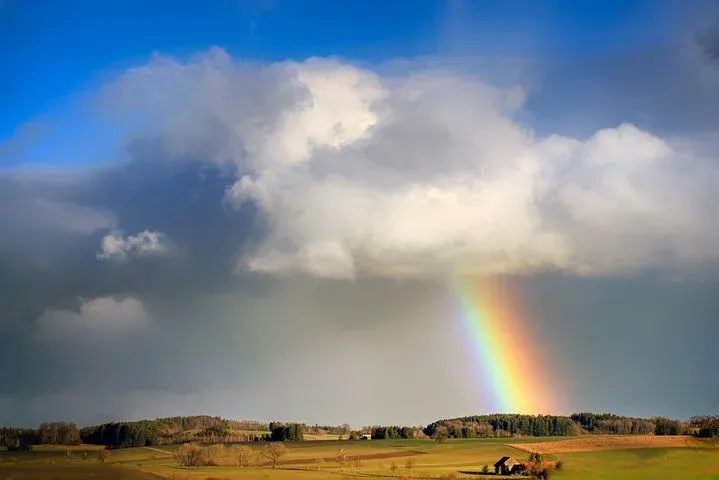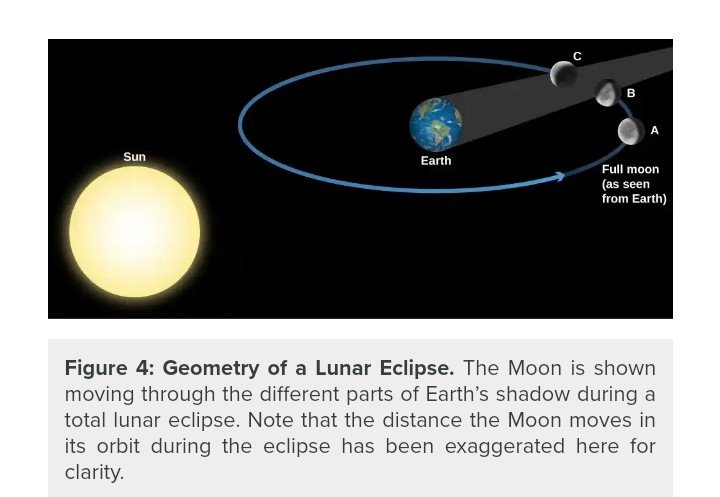Some natural phenomena: Rainbow and Eclipses
Hello everyone good to see you all, hope your day is filled with fun and goodies. In our last post, we study natural phenomena on the causes of day and night, and the season of the year. Okay in today post we will see more about natural phenomena. But this time we will study "Rainbows and Eclipses".
 [source] (
[source] (
https://pixabay.com/photos/eclipse-solar-eclipse-solar-sun-2666089/)
 [source] (https://pixabay.com/photos/rainbow-cloud-evening-sun-rain-4047523/)
[source] (https://pixabay.com/photos/rainbow-cloud-evening-sun-rain-4047523/)
RAINBOWS
White light, that is daylight is a mixture of coloured lights. This becomes obvious when white light is passed through a glass prism or soap bubbles. A glass prism or soap bubble is capable of separating white light into its coloured component. The colours present in white light are violet, indigo, blue, green, yellow, orange and red. The process of separating the white light into its component colours is called Dispersion. Rain drops like glass prisms and soap bubbles can also disperse white light to form band of colours.
 [source] (https://pixabay.com/photos/rainbow-coast-sunset-beach-sky-1467988/)
[source] (https://pixabay.com/photos/rainbow-coast-sunset-beach-sky-1467988/)
The rainbow is a band of seven beautiful colours formed after light from the sun has been dispersed by rain drops in the atmosphere. This is why rainbow is often sighted in the sky after rain fall.
Now with the above knowledge of how rainbow is formed, you may wish to reconsider whatever superstitious belief you might have had before now concerning the formation of rainbows. With proper knowledge of science, you come to know that any natural phenomena can be scientifically explained.
ECLIPSES
An eclipse is a temporary darkness on earth which occur when there should be bright light. Eclipses do not occur often but when they occur they last from a few minutes to about one hour.
Two types of eclipses have been observed. They are:
(a) Eclipse of the sun.
(b) Eclipse of the moon.
ECLIPSE OF THE SUN
One effect of the movement of earth and the moon relative to the sun and to each other is that light from the sun is sometimes prevented from reaching parts of the earth when the moon comes between the earth and the sun and throws its shadow on some parts of the earth.
ECLIPSE OF THE MOON
A lunar eclipse occurs when the Moon enters the shadow of Earth. The geometry of a lunar eclipse is shown in Figure 4. Earth’s dark shadow is about 1.4 million kilometers long, so at the Moon’s distance (an average of 384,000 kilometer). it could cover about four full moons. Unlike a solar eclipse, which is visible only in certain local areas on Earth, a lunar eclipse is visible to everyone who can see the Moon. Because a lunar eclipse can be seen (weather permitting) from the entire night side of Earth, lunar eclipses are observed far more frequently from a given place on Earth than are solar eclipses.
A lunar eclipse can take place only when the Sun, Earth, and Moon are in a line. The Moon is opposite the Sun, which means the Moon will be in full phase before the eclipse, making the darkening even more dramatic. About 20 minutes before the Moon reaches the dark shadow, it dims somewhat as Earth partly blocks the sunlight. As the Moon begins to dip into the shadow, the curved shape of Earth’s shadow upon it soon becomes apparent.
SUMMARY
Thanks to our understanding of gravity and motion . Eclipses can now be predicted centuries in advance. We’ve come a long way since humanity stood frightened by the darkening of the Sun or the Moon, fearing the displeasure of the gods. Today, we enjoy the sky show with a healthy appreciation of the majestic forces that keep our solar system running.
SOURCE
Lumen Astronomy. Earth, moon and sky
Thank you for your time have a blast week...

@tipu curate
Upvoted 👌 (Mana: 14/112) Liquid rewards.
Thank you am grateful